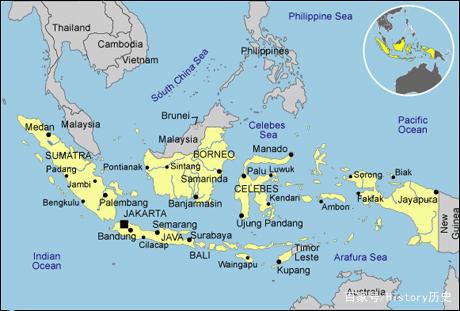https://pv-magazine-usa.com/2022/01/21/taxing-the-sun-experts-call-for-changes-to-potential-california-rooftop-solar-killing-proposal/
“Taxing the sun”; experts call for changes to potential California rooftop solar-killing proposal

Under NEM 3.0 IREC estimates 68,000 jobs are at stake, and that is just the tip of the iceberg.
Image: Wikimedia Commons
Net Energy Metering (NEM) has been a critical policy in launching the California rooftop solar market, which has grown to a robust 1.3 million homes covered in panels, representing about 50% of the US residential market. It also helped launch distributed commercial rooftop projects, another key part of California’s race to electrical decarbonization.
That effort may be at risk now, as the proposed NEM 3.0 to be reviewed by the California Public Utilities Commission (CPUC) includes cost-prohibitive measures. A recent survey of 4,000 active home solar shoppers found that 95% of homeowners are no longer interested in buying solar after viewing the cost assumptions of the new rate plan.
The proposal includes roughly an 80% reduction in the payment for excess solar energy sent to the grid, and tacks on an $8 per kW monthly charge for all solar customers, regardless of whether they have battery energy storage or not. A common-sized 8 kW system would be charged $64 a month, a fee that makes solar a non-option for most customers. In a ROTH Capital webinar, hailed grid expert Dr. Ahmad Faruqui condemned the proposed decision, calling it instead a “proposed dystopia” that extends a solar array’s payback period to an untenable 20 years or more.
The entire NEM 3.0 proposal can be viewed here.
“Taxing the sun”
Recently, Environmental Working Group (EWG) hosted a webinar with leaders from Environment California, Stanford University, Coalition for Environmental Equity and Economics, and EQ Research, marshalling their wide range of expertise to assess some of the potential damage from the proposal, disprove false assumptions in the proposal, and share that they have submitted alternatives.
EWG president Ken Cook kicked off the talk, holding back no punches, saying that the proposal is a monopoly-protecting move by California utilities. “We want California rooftop solar democratized,” he said.
Cook turned the conversation over to Laura Deehan, state director Environment California (Environment America), who joined her colleagues in calling the fixed grid access charge of $8 per kW a “solar tax.” Deehan said, “If we want clean energy, we shouldn’t be taxing the sun.”

Laura Deehan, state director, Environment California.
Image: Environment America
In the ROTH webinar, Dr. Faruqui said the fee was an absurd penalty to solar customers. He said, “Why should someone buying carrots at the grocery store have to pay more because they also grow carrots at home?”
California the next Nevada?
In 2016-2018, the state of Nevada went through massive oscillations in rooftop solar deployment after a similar (though less steep) net metering value reduction was approved. A $35 solar penalty fee, and a 75% drop in fees led to a nearly 90% drop in rooftop deployment growth in the state.

Image: Environment America
Unfortunately for Californians, the proposed NEM 3.0 is expected to be worse than Nevada’s changes. EQ analyst Ben Inskeep shared that EQ modeled the Nevada value loss in solar to be 57%, but in California, based on conservative assumptions, PG&E solar customers are expected to lose 71% in value, SDG&E customers 64%, and SCE 57%.
EQ said NEM 3.0 leads to an estimated 57-71% overall reduction in residential solar savings rate under conservative assumptions.
On top of this, Inskeep said the proposal creates complexity, a barrier for both customers and installers. Over the course of a year, EQ estimated that each customer will have 576 different export rates to manage. Regional installers will have to keep track of these rates and use them to justify savings estimates. Installers working over multiple environmental zones would have even more export rates, adding further complexity.
Health and environment
Environment California modeled the impact of the proposal, and found that rooftop solar could prevent the development of 148,000 acres of land. This is based on a state regulator estimated deployment of 28.5 GW of rooftop solar through 2045 in order to meet clean energy goals. That is an area about half the size of Los Angeles that could be preserved.
In October 2020, Newsom issued an executive order to protect 30% of California’s natural land and water areas by 2030, up from the 22% that is protected currently. Rooftop solar can help minimize conflicts between the state’s conservation and clean energy goals, said Environment California.

Image: Stanford University
Mark Jacobson, fellow and professor of civil and environmental engineering at Stanford University, said rooftop solar is important in protecting human health and minimizing risks. Replacing overhead wiring, overloaded transformers, and natural gas piping, rooftop solar replaces harmful and dangerous infrastructure from the built environment.
“The argument this proposal will help disadvantages communities is wrong… it will disproportionately kill them,” said Jacobson.
Jacobson pointed to the 2010 San Bruno natural gas explosion that killed eight people and cost PG&E over $2.2 billion. In 2017 alone, PG&E’s downed transmission wires were found at fault for massive wildfires, sticking the company with a $7.5 billion bill and leaving many Californians without homes. These costs incurred by the utilities are harmful to all Californians, as the financial fallout from these disasters is picked up by ratepayers in the form of a higher bill.
Jacobson said the continued use of new dirty energy sources will raise California’s air pollution death rates above the current level of 12,000 per year. Most of the additional deaths will occur in the Los Angeles basin and Central valley, where pollution levels already rank highest in the state, he said.
Market transition credit
Esperanza Vielma of the Coalition for Environmental Equity and Economics (CEEE) joined the webinar, highlighting the action being taken by CEEE and other grassroots and advocacy organizations to fight for their communities.
Vielma said CEEE submitted a proposal to the CPUC, outlining potential job losses, and bringing attention to the limitations of the “market transition credit” that was pitched as a relief provision to disadvantages communities. The market transition credit offsets a small portion of the fixed grid participation charge for ten years. However, EQ noted the provision only offsets about 10% of new costs for PG&E customers, and 17% of SCE customers’ new costs. Plus, the ten-year provision steps down 25% in value each year, offering little relief.
Vielma noted that SDG&E customers are conspicuously left out of the market transition credit altogether. She said GRID Alternatives, CEEE and other community organizations submitted proposals asking for the inclusion of SDG&E and for improve transition credit values, but they were denied.

Image: GRID Alternatives
On January 13th, the California Solar and Storage Association (CALSSA) organized a protest of the proposal, and over 1000 protestors demonstrated in front of the CPUC, and nearly 2000 more gathered in Grand Park, Los Angeles. Of the 230,000 US solar workers reported by the Interstate Renewable Energy Council (IREC), as many as 68,000 jobs are put at risk by NEM 3.0, said IREC.
Deadline pushed
Following the rally, and numerous statements from industry leaders, experts, and advocates, Governor Gavin Newsom commented at a press meeting that there was still “work to be done” on the proposed decision.

Image: Wikimedia Commons
January 27th has been marked in red ink on many calendars as the day the proposed decision may be passed. However, this may change, as EQ Research analyst Ben Inskeep shared that the the CPUC’s publicly-released schedule does not have NEM 3.0 on the docket for the 27th. This means the proposal could reach a vote as early as its next scheduled meeting on February 10th.
Tea-leaf reading here may suggest that an alternative proposal is being considered, said Cook. Deehan said, “We are hopeful the CPUC and Governor’s office will make the right choice and not pass NEM 3.0 as proposed.”
This content is protected by copyright and may not be reused. If you want to cooperate with us and would like to reuse some of our content, please contact: editors@pv-magazine.com.




